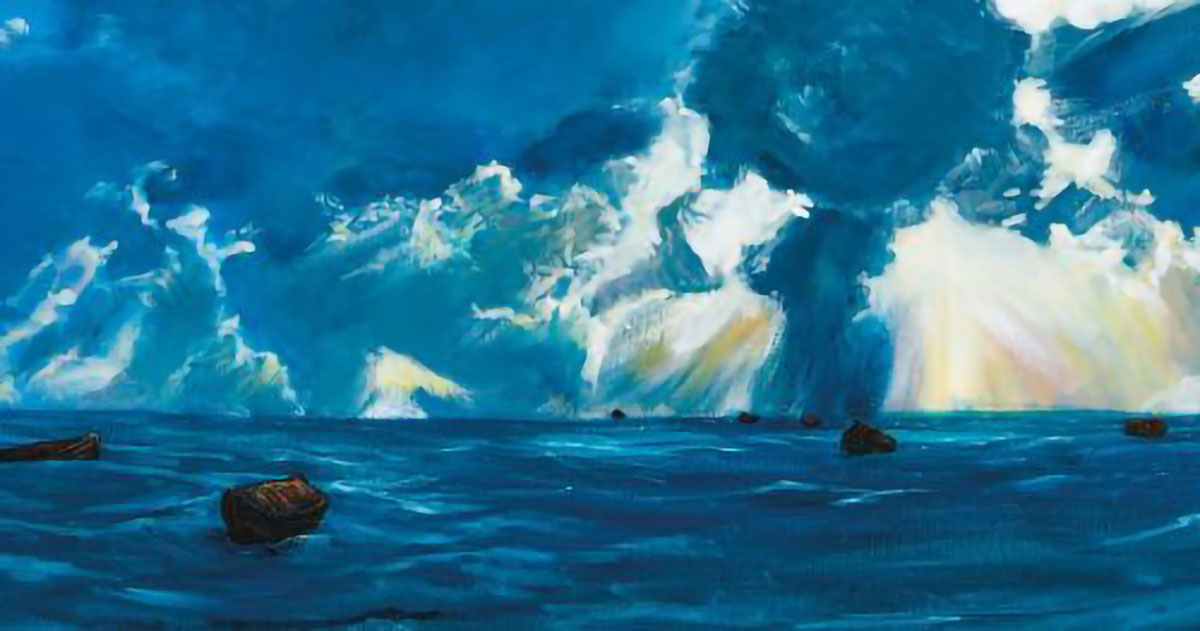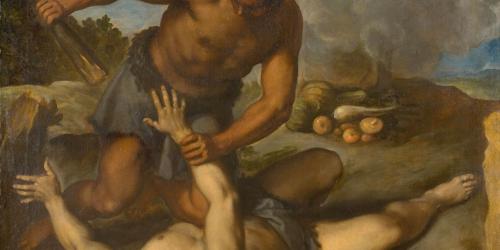You are here
Book of Mormon Central is in the process of migrating to our new Scripture Central website.
We ask for your patience during this transition. Over the coming weeks, all pages of bookofmormoncentral.org will be redirected to their corresponding page on scripturecentral.org, resulting in minimal disruption.
Come Follow Me 2020: Ether 6-11

Scripture Block
Ether 6–11
November 16–22. “That Evil May Be Done Away”
Recommended Resources
Learn about the Book of Mormon with verse by verse commentaries from renowned Book of Mormon scholars like John W. Welch and Brant A. Gardner in the ScripturePlus app. Read this week's KnoWhy connected with the Come Follow Me curriculum, and watch a video elucidating an insight in this week's scripture reading.
KnoWhys
Reading Plan
Structure your personal scripture study by following a multimedia, day by day plan. Each day's assignment includes the required scripture passages from the Come Follow Me curriculum, as well as suggestions for additional resources to bring context and understanding to your study.
Monday
- Scripture: Ether 6:1-9
- KnoWhy 240: Where did the Brother of Jared Get the Idea of Shining Stones?
- KnoWhy 500: Is the Book of Mormon Musical?
Tuesday
- Scripture: Ether 6:10-18
- Image: The Wind Did Never Cease to Blow
- Image: Buried in the Depths
-
Quote: “The various scriptures tell us vital things about God’s ‘tender mercies’ and His dealings with our predecessors. What is past is truly prologue; hence an unvarying, all-seeing God, desiring to save mercurial and myopic man, is not interested in our retroactive adulation, but in preventing our prospective ruination.”
Maxwell, Neal A. “God Will Yet Reveal.” General Conference October 1986. -
Quote: “Tilling the ground seems like such an ordinary thing to do. Why, then, would one waste time and space writing about such things? Such an apparently superfluous piece of information becomes more meaningful when we realize that tilling the earth had symbolic significance among various ancient societies. Mircea Eliade has noticed in his studies of ancient cultures and religions that ‘… rites are performed that symbolically repeat the act of Creation’ …Thus, tilling the ground may symbolize the act of creation to the author/editor of the Jaredite record and therefore warrants inclusion”
Thompson, John S. “The Jaredite Exodus: A Literary Perspective of a Historical Narrative.” Journal of Book of Mormon Studies 3, no. 1 (1994): 106-107. - Scripture: Ether 6:19-30
Wednesday
- Scripture: Ether 7:1-8
-
Quote: “Orihah is a perfect example of the Lord’s teachings on righteous kingship as presented by Mosiah. If just rulers could always be chosen, then kingship would be an expedient form of government. However, not all leaders are just, and it is therefore usually not expedient to have kings rule. . .“
Clearly the brother of Jared well understood the Lord’s teachings regarding kingship, [See Ether 6:22-23] for it was not long after the reign of Orihah that his prophetic words were fulfilled when Orihah’s successor was brought into captivity. (Ether 7:5)”
Skinner, Andrew. “Promises Fulfilled,” in Studies in Scripture, Volume 8: Alma 30 to Moroni, edited by Kent P. Jackson. Salt Lake City, UT: Deseret Book, 1988. - Scripture: Ether 7:9-27
- KnoWhy 241: Why Is The Book of Ether an Epic?
Thursday
- Scripture: Ether 8:1-26
-
Quote: “There is one tale of intrigue in the book of Ether that presents very ancient and widespread (though but recently discovered) parallels. That is the story of Jared’s daughter…Historically, the whole point of this story is that it is highly unoriginal. It is supposed to be…The thing to note especially is that there actually seems to have been a succession rite of great antiquity that followed this pattern…the episode of the dancing princess is at all times essentially a ritual, and the name of Salome (in reference to Herodias’ daughter) is perhaps no accident, for her story is anything but unique”
Nibley, Hugh. Lehi in the Desert/The World of the Jaredites/There Were Jaredites. Vol. 5. The Collected Words of Hugh Nibley. 212. Salt Lake City, UT: Deseret Book, 1988. -
Quote: “Moroni could have pointed out many factors that led to the destruction of the people, but notice how he singled out the secret combinations, just as the Church today could point out many threats to peace, prosperity, and the spread of God’s work, but it has singled out the greatest threat as the godless conspiracy…This scripture should alert us to what is ahead unless we repent”
Benson, Ezra Taft. God, Family, and Country: Our Three Great Loyalties. 321-322. Salt Lake City, UT: Deseret Book, 1974. -
Quote: “Without question Satan was at the very heart of the secret combinations which destroyed once and for all, without hope of recovery, the Zion society of the Nephites. He alone inspires the hearts of wicked men to secretly combine against righteousness (Helaman 6:26). And he concocts and administers the oaths and covenants of his kingdom. However, Satan could not have made any inroads without the initial overtures of the people themselves. Joseph Smith taught that ‘the moment we revolt at anything which comes from God, the devil takes power’ (Teachings of the Prophet Joseph Smith, p.181). The people of 4 Nephi, guilty of this revolt or rebellion, consciously rejected light and truth”
Skinner, Andrew C. “Zion Gained and Lost: Fourth Nephi as the Quintessential Model." In The Book of Mormon: Fourth Nephi through Moroni, from Zion to Destruction: Papers from the Ninth Annual Book of Mormon Symposium, 1994, edited by Monte S. Nyman and Charles D. Tate, 299. Provo, UT, UT: Religious Studies Center, Brigham Young University, 1995. - KnoWhy 242: Why Did Moroni Comment So Much Throughout Ether?
Friday
- Scripture: Ether 9:1-24
-
Quote: “A war of the most horrible character broke out, which lasted for several years, and ended when nearly every soul was slain. Of the Kingdom of Akish, for which he had sinned so much, there remained but thirty souls. All the rest--men, women, and children, had been swept by bloody hands into untimely graves. The people of Akish having been thus destroyed, Omer, with his friends, returned from his exile and reigned over the feeble remnant of a wasted people”
Reynolds, George, and Janne Mattson Sjodahl. Commentary on the Book of Mormon. 6:136. Salt Lake City: Deseret Book Co., 1976. - Scripture: Ether 9:25-35
-
Quote: “The experiences of Emer are some of the most promising moments in these chapters of rampant wickedness among the Jaredites. As a very righteous leader of his people, Emer was privileged to have the veil parted and see the Lord Himself…Moroni may have desired to show us through Emer that not only righteousness but perfect faith is possible in a world sandwiched in on all sides by wickedness”
Judd, Frank F. “Jaredite Zion Societies: Hope for a Better World.” In The Book of Mormon: Fourth Nephi through Moroni, from Zion to Destruction: Papers from the Ninth Annual Book of Mormon Symposium, 1994, edited by Monte S. Nyman and Charles D. Tate, 150. Provo, UT: Religious Studies Center, 1995. - KnoWhy 243: Why Did Snakes Infest Jaredite Lands During a Famine?
Saturday
- Scripture: Ether 10:1-6
- KnoWhy 244: Why Did Riplakish Construct a Beautiful Throne?
- Scripture: Ether 10:7-34
-
Quote: “There is a big difference between the way this people prospered compared with the deceptive and bloodthirsty means by which previous wicked men murdered to get gain…. The language which Moroni used to describe the state of the people of Lib is remarkably similar to the language his father Mormon used to describe the Zion society of the Nephites in 4 Nephi… (4 Nephi 1:16). It seems possible that Moroni was trying to bring to our memory the precious experiences of those Nephites as he describes the righteousness among the people of Lib”
Judd, Daniel K. “Jaredite Zion Societies: Hope for a Better World,” In The Book of Mormon: Fourth Nephi through Moroni, from Zion to Destruction: Papers from the Ninth Annual Book of Mormon Symposium, 1994, edited by Monte S. Nyman and Charles D. Tate, 152. Provo, UT, UT: Religious Studies Center, Brigham Young University, 1995. -
Quote: “The image of the hand of God … stands for the Lord’s power to intervene in the affairs of men and the events of history…. The hand of God is also cited often as the agent of judgment as well as the means of deliverance…. The hand of the Lord was what once made the Jaredites prosperous (see Ether 10:28) but later destroyed them (see Ether 1:1)”
Seely, David Rolph. “The Image of the Hand of God in the Book of Mormon and the Old Testament.” In Rediscovering the Book of Mormon, edited by John L. Sorenson and Melvin J. Thorne, 140–141. Provo, UT: FARMS, 1991.
Sunday
- Scripture: Ether 11:1-23
-
Quote: “[The Jaredites] would say with the corrupt Ahab, ‘I hate [the prophet Micaiah]; for he never prophesied good unto me, but always [prophesied] evil.’ That kind of hate for a prophet’s honesty cost Abinadi his life. As he said to King Noah: ‘Because I have told you the truth ye are angry with me. … Because I have spoken the word of God ye have judged me that I am mad’ or, we might add, provincial, patriarchal, bigoted, unkind, narrow, outmoded, and elderly.”
Holland, Jeffrey R. “The Cost—and Blessings—of Discipleship.” General Conference April 2014. - KnoWhy 245: Why Does the Book of Mormon Include the Rise and Fall of Two Nations?
-
Quote: “The Book of Mormon itself… does not claim that the peoples it describes were either the predominant or the exclusive inhabitants of the lands they occupied. In fact, cultural and demographic clues in its text hint at the presence of other groups [like the Nephites and Mulekites]…. The 2006 update of the Introduction to the Book of Mormon reflects this understanding by stating that Book of Mormon peoples were ‘among the ancestors of the American Indians’"
“Book of Mormon and DNA Studies.” Gospel Topics Essay.
Additional Resources (Bibliography)
Ether 6
Thompson, John S. “The Jaredite Exodus: A Literary Perspective of a Historical Narrative.” Journal of Book of Mormon Studies 3, no. 1 (1994): 104–112.
Woodward, Mikayla. “Ether 6 and the Plan of Salvation.” In Selections from the BYU Religious Education Student Symposium 2003, 181–193. Provo, UT: Religious Studies Center, 2003.
Ether 6:3
Book of Mormon Central. “Where did the Brother of Jared Get the Idea of Shining Stones? (Ether 6:3).” KnoWhy 240 (November 28, 2016).
Tvedtnes, John A. “Appendix 2: Glowing Stones in Ancient and Medieval Lore.” In The Book of Mormon and Other Hidden Books: "Out of Darkness Unto Light", 195–225. Provo, UT: Foundation for Ancient Research and Mormon Studies, 2000.
Tvedtnes, John A. “Glowing Stones in Ancient and Medieval Lore.” Journal of Book of Mormon Studies 6, no. 2 (1997): 99–123.
Tvedtnes, John A. “New Light on the Shining Stones of the Jaredites.” Insights: A Window on the Ancient World 12, no. 4 (1992): 2–4.
Ether 6:4
Christenson, Allen J. “By Land or by Sea? Revisiting the Bering Straits.” In Pressing Forward with the Book of Mormon: The FARMS Updates of the 1990s, edited by John W. Welch and Melvin J. Thorne, 256–258. Provo, UT: FARMS, 1999.
Ether 6:7
Nibley, Hugh W. “Some Test Cases from the Book of Ether.” In An Approach to the Book of Mormon. Provo, UT: FARMS, 1988.
Ether 6:9
Book of Mormon Central. “Is the Book of Mormon Musical? (Ether 6:9).” KnoWhy 500 (January 31, 2019).
Ether 6:20
Childs, Larry G. “Present Participle Adjuncts in the Book of Mormon.” Journal of Book of Mormon Studies 6, no. 1 (1997): 24–38.
Ether 7
Nibley Hugh W. “Lecture 110: Ether 7-14.” In Teachings of the Book of Mormon, Semester 4: Transcripts of Lectures Presented to an Honors Book of Mormon Class at Brigham Young University, 1988-1990. Provo, UT: FARMS, 2004.
Ether 7:9
Hamblin, William J. “Vikings, Iron, and the Book of Mormon.” In Pressing Forward with the Book of Mormon: The FARMS Updates of the 1990s, edited by John W. Welch and Melvin J. Thorne, 259–261. Provo, UT: FARMS, 1999.
Sorenson, John L. “Out of the Dust: Steel in Early Metallurgy.” Journal of Book of Mormon Studies 15, no. 2 (2006): 108–109, 127.
Ether 8
Jolley, Elliot. “Gazelem the Jaredite.” Interpreter: A Journal of Latter-day Saint Faith and Scholarship 27 (2017): 85–105.
Ether 8:16
Welch, John W., and Greg Welch. “A Comparison of Nephite Law Lists.” In Charting the Book of Mormon: Visual Aids for Personal Study and Teaching. Provo, UT: Foundation for Ancient Research and Mormon Studies, 1999, chart 127.
Ether 8:20
Book of Mormon Central. “Why Did Moroni Comment So Much Throughout Ether? (Ether 8:20).” KnoWhy 242 (November 30, 2016).
Ether 8:22–23
Bowen, Matthew L. “Getting Cain and Gain.” Interpreter: A Journal of Mormon Scripture 15 (2015): 115–141.
Hilton, John III, Ryan Sharp, Brad Wilcox, and Jaron Hansen. “Gentiles in the Book of Mormon.” Interpreter: A Journal of Latter-day Saint Faith and Scholarship 33 (2019): 267–288.
Ether 9
Brinley, Douglas E. “The Jaredites—A Case Study in Following the Brethren.” In The Book of Mormon: Fourth Nephi Through Moroni, From Zion to Destruction, edited by Monte S. Nyman and Charles D. Tate, Jr., 45–59. Provo, UT: Religious Studies Center, Brigham Young University, 1995.
Welch, John W., and Greg Welch. “Plausible Locations of the Final Battles.” In Charting the Book of Mormon: Visual Aids for Personal Study and Teaching. Provo, UT: Foundation for Ancient Research and Mormon Studies, 1999, chart 159.
Ether 9:23
Sorenson, John L. “New Discoveries in Mexico on the Jaredite Period.” Insights: A Window to the Ancient World 11, no. 2 (1991): 2.
Ether 9:30–31
Book of Mormon Central. “Why Did Snakes Infest Jaredite Lands During a Famine? (Ether 9:30).” KnoWhy 243 (December 1, 2016).
Nibley, Hugh W. “Some Test Cases from the Book of Ether.” In An Approach to the Book of Mormon. Provo, UT: FARMS, 1988.
Rappleye, Neal. “’The Great and Terrible Judgments of the Lord’: Destruction and Disaster in 3 Nephi and the Geology of Mesoamerica.” Interpreter: A Journal of Mormon Scripture 15 (2015): 143–157.
Tvedtnes, John A. “Drought and Serpents.” In Pressing Forward with the Book of Mormon: The FARMS Updates of the 1990s, edited by John W. Welch and Melvin J. Thorne, 262–265. Provo, UT: FARMS, 1999.
Tvedtnes, John A. “Notes and Communications: Drought and Serpents.” Journal of Book of Mormon Studies 6, no. 1 (1997): 70–72.
Ether 10
Welch, John W., and Greg Welch. “Plausible Locations of the Final Battles.” In Charting the Book of Mormon: Visual Aids for Personal Study and Teaching. Provo, UT: Foundation for Ancient Research and Mormon Studies, 1999, chart 159.
Ether 10:6
Book of Mormon Central. “Why Did Riplakish Construct a Beautiful Throne? (Ether 10:6).” KnoWhy 244 (December 2, 2016).
Clark, John E. “Archaeology, Relics, and Book of Mormon Belief.” Journal of Book of Mormon Studies 14, no. 2 (2005): 38–49, 71–74.
Ether 10:23
Welch, John W., and Greg Welch. “Metals in the Book of Mormon.” In Charting the Book of Mormon: Visual Aids for Personal Study and Teaching. Provo, UT: Foundation for Ancient Research and Mormon Studies, 1999, chart 163.
Ether 11
Brinley, Douglas E. “The Jaredites—A Case Study in Following the Brethren.” In The Book of Mormon: Fourth Nephi Through Moroni, From Zion to Destruction, edited by Monte S. Nyman and Charles D. Tate, Jr., 45–59. Provo, UT: Religious Studies Center, Brigham Young University, 1995.
Welch, John W., and Greg Welch. “Plausible Locations of the Final Battles.” In Charting the Book of Mormon: Visual Aids for Personal Study and Teaching. Provo, UT: Foundation for Ancient Research and Mormon Studies, 1999, chart 159.
Ether 11:9
Larsen, Stan. “Conjectural Emendation and the Text of the Book of Mormon.” BYU Studies Quarterly 18, no. 4 (1978): 563–569.
Ether 11:15
Bowen, Matthew L. “Getting Cain and Gain.” Interpreter: A Journal of Mormon Scripture 15 (2015): 115–141.
Ether 11:20–21
Book of Mormon Central. “Why Does the Book of Mormon Include the Rise and Fall of Two Nations? (Ether 11:20–21).” KnoWhy 245 (December 5, 2016).
Clark, John E. “Archaeological Trends and Book of Mormon Origins.” BYU Studies Quarterly 44, no. 4 (2005): 83–104.





